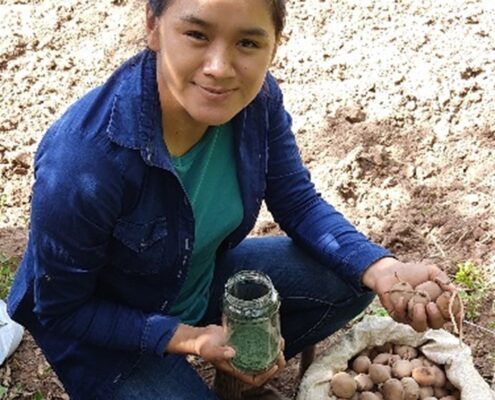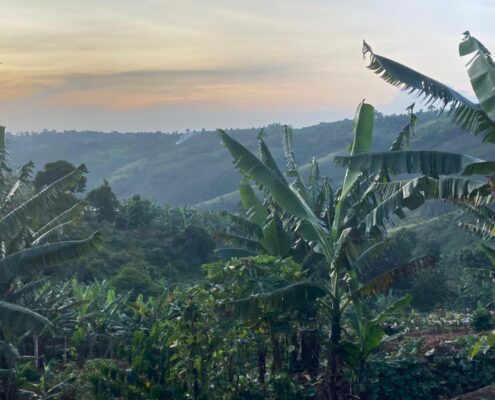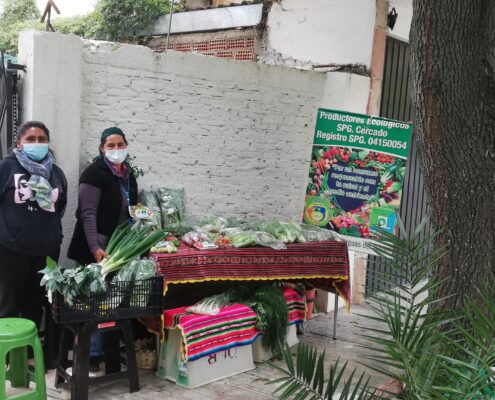 https://greenmarked.it/wp-content/uploads/2024/06/pexels-lauripoldre-16983197-scaled.jpg
1707
2560
Michele Claus
https://greenmarked.it/wp-content/uploads/2022/01/LOGO-GREENMARKED-SITO-600x600.png
Michele Claus2024-06-11 17:08:542024-06-11 20:06:11Re-naturalization is possible!
https://greenmarked.it/wp-content/uploads/2024/06/pexels-lauripoldre-16983197-scaled.jpg
1707
2560
Michele Claus
https://greenmarked.it/wp-content/uploads/2022/01/LOGO-GREENMARKED-SITO-600x600.png
Michele Claus2024-06-11 17:08:542024-06-11 20:06:11Re-naturalization is possible!June 11, 2024

This past June 5 marked World Environment Day! We recently shared with you an update on the status of the Agrecol Trees project, where we are doing our part to protect the environment and ecosystems by planting trees in booming urban areas in the Cochabamba area of Bolivia. The GreenMarked team has been involved in the past years in similar activities in the Trentino-South Tyrol region as well, with a secondary school from Trentino and with a group of young people from Bolzano.
Fortunately, there are many similar initiatives and the effects are concrete and tangible. The regenerative agroforestry project Trees for the Future (TREES) [1] for example, seeks to combine the beneficial effects of reforestation with those of economic independence and food security, succeeding in planting as many as 350 million trees since its inception in 1989. Recently, the United Nations gave this project the “World Restoration Flagship” [2], which means this is a major example for restoring the natural environment.
There is no one-size-fits-all solution to the challenges we face. Tree planting alone will not solve hunger, poverty, or the climate crisis. By training farmers in the Forest Garden Approach, we provide families with the tools and training they need to ensure they can thrive on their land longterm.
Trees for the Future

Fig. 1: A piece of land converted to agroforestry by the Trees For The Future project. Notice the natural fence around the field, that protects the crops. Image from the TREES press kit.
Restoring ecosystems and vegetation is something that the couple formed by Sebastiao Salgado and his wife Lélia have also taken seriously since their return to Brazil in 1998. They realized that the natural paradise of their childhood existed only in memories. Trees had been cut down, rainwater flowed without being held back, and the land was severely eroded. It was Lélia who had the crazy (or brilliant?) idea to replant everything. The couple recruited members, raised funds, and some 17,000 hectares of land were reborn: thus Instituto Terra, a nongovernmental, nonprofit environmental organization, was born [3]. Thanks to them, the land they love so much has come back to life and so many animal species have returned to inhabit it, as evidenced by the available photo reports.
Fig. 2: How the Salgados couple re-naturalized the area during the past decades. Copyright free images from Google Art & Culture.

Fig. 3: The re-forestation activity of the Salgados changed the landscape during the years. Copyright free image from Wikipedia.
But vegetation restoration is something that not only can be implemented on land, but also on the seabed! Marine ecosystems and forests have also been severely damaged in the past decades, and it is crucial to try to defend and restore them. In fact, oceans play a key role in the carbon dioxide cycle, absorbing and storing it on the seabed [4]. An Italian company, zeroCO2 is working on this: it has transplanted more than 12 thousand Posidonia seedlings off the coast of Sardinia [5]. Posidonia forests are crucial habitats in the Mediterranean, hosting about one fourth of local marine species. Posidonia, a plant (not a seaweed) with ribbon-like leaves up to 1 meter long, captures carbon dioxide and releases oxygen. Not only that, but one hectare of these grasslands is home to hundreds of different species, providing them all with shelter and nourishment

Fig. 4: A picture of a Posidonia oceanica forest. Copyright free image from Wikipedia.
Through the foresight and tenacity of people like these we are able to have large-scale positive impacts and make a difference. We must also remember that these goals would not be achievable without a close collaboration with the local communities, who will care for their land in the long run.
Related articles:
References:
Click here to expand the references[1] Trees for the Future. (2024, May 1). Trees for the Future. https://trees.org/
[2] Nature is staging a comeback: UN recognizes seven World Restoration Flagships. (n.d.). UN Environment. https://www.unep.org/news-and-stories/press-release/nature-staging-comeback-un-recognizes-seven-world-restoration
[3] Instituto Terra. (2024, May 1). https://institutoterra.org/
[4] NASA Earth Observatory. (n.d.). The ocean’s carbon balance. https://earthobservatory.nasa.gov/features/OceanCarbon
[5] Marine Reforestation Sardinia Posidonia Project | ZeroCO2. (2023, September 12). zeroCO2. https://zeroco2.eco/en/services/plant-a-forest-underwater/
Cover and preview image: Copyright-free photo by Lauri Poldre on Pexels.










